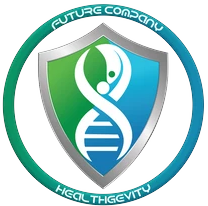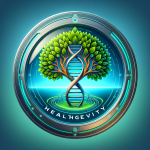-
HealthGevity Admin posted in the group Longevity
Is the reversal of cellular aging possible through chemical means?
New research identifies six chemical cocktails that could reverse transcriptomic age.
Life is dependent on the preservation and storage of information. The genome and epigenome are the two central storehouses of information in eukaryotes, and although they work interdependently, they are fundamentally quite different. Genetic information is consistent across all body cells throughout the life of an individual while epigenetic information varies between cells as well as changes over time and as per environment.Researchers have identified several hallmarks of aging such as epigenetic alterations, genomic instability, cellular senescence, telomere attrition, mitochondrial dysfunction, and others [1]. These are known to play a role in the dysfunction and deterioration of cells with age. David Sinclair and other researchers have previously indicated that loss of epigenetic information can cause changes in gene expression, leading to cellular identity loss. Previous studies in mice have also shown that cell injuries such as cell crushing and DNA double-strand breaks can promote loss of epigenetic information which can accelerate aging along with age-related diseases [2].
Cellular senescence is a state of stable cell cycle arrest that can be triggered due to a wide range of extrinsic as well as intrinsic factors. It promotes tissue remodeling, wound repair, and cancer prevention by stopping the proliferation of damaged and aged cells. Senescent cells are characterized by metabolic and morphological alterations, reorganization of the chromatin, and release of pro-inflammatory substances known as the senescence-associated secretory phenotype (SASP) [3]. Irreparable DNA damage, loss of epigenetic information, and telomere shortening are a few factors that can initiate cellular senescence. Accumulation of senescent cells with age results in inflammation as well as the generation of reactive oxygen species (ROS).
Gurdon and others reported in 1962 that nuclei contain enough information that give rise to new individuals with normal lifespans. Yamanaka and Takahashi indicated in 2006 that the expression of four transcription factors, OCT4, SOX2, KLF4, and c-MYC (together known as OSKM) can reprogram the development of adult cells, causing their conversion to various cell types. Such findings showed that the identity of various types of adult cells of different species could be eliminated to become induced pluripotent stem cells, also known as “iPSCs”.
Initially, the ability of Yamaka factors to reverse cellular aging in vivo without causing uncontrolled cell growth and tumorigenesis was questioned. However, studies by Belmonte lab and others confirmed that expression of OSKM, or continuous expression of only OSK, could safely improve the function of tissues in vivo. One previous study reported that the expression of OSK throughout the body of mice extended their lifespan. These results highlight the presence of a “backup copy” of a youthful epigenome that can be reprogrammed partially to regain tissue function without causing tumorigenesis or impacting cellular identity.
Longevity. Technology: Current translational applications aiming to treat injuries, reverse aging, and treat age-related diseases depend on the delivery of genetic material to target tissues through methods such as lipid nanoparticle-mediated delivery of RNA and adeno-associated viral (AAV) delivery of DNA. However, such approaches are of high cost and have safety concerns due to the introduction of genetic material into the body. Developing a chemical alternative that would mimic the rejuvenating properties of OSK can help lower costs and shorten the duration of the development of regenerative medicine.
A new study in the Aging journal developed and used a quantitative nucleocytoplasmic compartmentalization assay (NCC) that was capable of distinguishing between old, young, and senescent cells. This helped them identify several chemical cocktails that could reverse transcriptomic age and rejuvenate cells to the same extent as overexpression of OSK.
Dr David Sinclair (L) with colleagues in the lab
David Sinclair and his team of researchers indicated the deterioration of nucleocytoplasmic compartmentalization (NCC) as one of the most well-conserved hallmarks of aging. This is because it can be visualized as the inability of proteins to be imported into the nucleus and leakage of nuclear proteins thereby leading to protein aggregation in the cytosol and increased nuclear permeability [4].They introduced the NCC reporter system into human fibroblasts from a 22-year-old donor and linked eGFP to nuclear export signal (NES) and mCherry to nuclear localization signal (NLS). They observed the cellular localization of the healthy young fibroblasts to be separated while fibroblasts from a 14-year-old Hutchinson-Gilford progeria syndrome (HGPS) patient or a 94-year-old donor were observed to be clustered in the cytoplasm.
Aggregation of mCherry was observed in the cytoplasm along with colocalization with eGFP in senescent fibroblasts. The colocalization signal was reported to be higher in senescent cells as compared to quiescent cells. Comparison of quiescent young to quiescent old cells indicated upregulation of 190 genes and downregulation of 326 genes. OSK expression for four days was reported to increase the expression of 65.3% of downregulated genes and decrease the expression of 43.2% of the upregulated genes, thereby restoring about half of the genes that were changed due to senescence. This process is called the EPOCH method, which stands for epigenetic programming of old cell health [4]. OSK treatment was also observed to restore NCC integrity in senescent cells which was comparable to the non-senescent cell population.
The results also reported that out of the 80 chemical cocktails that were tested in the NCC assay, the VC6TF (valproic acid (V), CHIR-99021 (C), E-616452 (6), tranylcypromine (T) and forskolin (F)) basal cocktail most effectively restored the integrity of nucleocytoplasmic compartmentalization. Additionally, six more cocktails were chosen, out of which 3 were based on Cocktail 1 (VC6TF) along with two additives, and the other 3 were based on Cocktail 4 (C6NYSA that stands for CHIR-99021 (C), E-616452 (6), TTNPB (N), Y-27632 (Y), Smoothened Agonist (S), and ABT-869 (A)) along with other additives. These six cocktails were also observed to improve NCC compartmentalization in senescent cells. Inhibition of chromatin remodeling factors such as TGF-β and H3K9 methyltransferase G9a were observed to block the rejuvenation pathways that were initiated by C1 and C4. However, no disruption was observed when the H3K27 methyltransferase component of EZH2 and PRC2 were inhibited.
The six cocktails were also reported to significantly reduce the transcriptomic age and chronological age of NCC senescent cells [4]. Mouse-driven cocktails were found to possess a stronger and more consistent anti-aging effect on the cellular transcriptome as compared to human cocktails. The chemical cocktails were also observed to upregulate respiration-associated pathways and downregulate several inflammation-associated pathways.
Therefore it can be concluded that the chemical cocktails were not only capable of reversing the impact of senescence in NCC, but they were also capable of reversing key transcriptional signatures of senescence.
“The assays developed in this study, combined with robotics and the increasing power of artificial intelligence, will facilitate increasingly larger screens for genes, biologics, and small molecules that safely reverse mammalian aging,” says the team of researchers [4].
Future work must take place to understand how long the effects of these and other EPOCH treatments last in vivo – this will ensure a step towards affordable whole-body rejuvenation.
Is the reversal of cellular aging possible through chemical means?
User Badges
Gamipress User Balance
1665
Points
0
XPs






